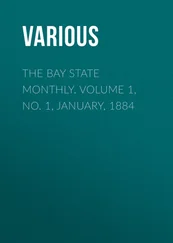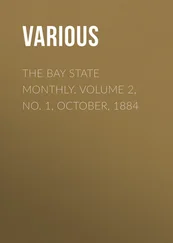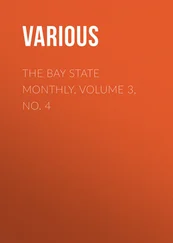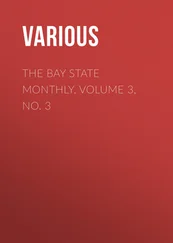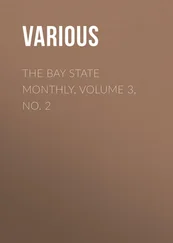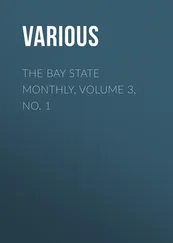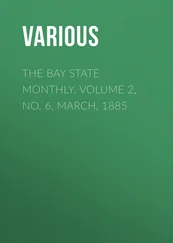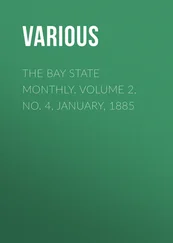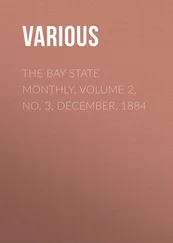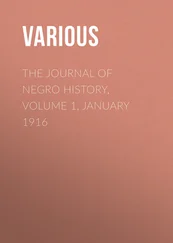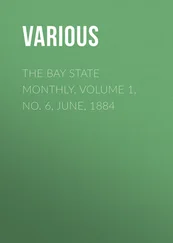Various - The Journal of Negro History, Volume 5, 1920
Здесь есть возможность читать онлайн «Various - The Journal of Negro History, Volume 5, 1920» — ознакомительный отрывок электронной книги совершенно бесплатно, а после прочтения отрывка купить полную версию. В некоторых случаях можно слушать аудио, скачать через торрент в формате fb2 и присутствует краткое содержание. Жанр: foreign_antique, periodic, История, foreign_edu, на английском языке. Описание произведения, (предисловие) а так же отзывы посетителей доступны на портале библиотеки ЛибКат.
- Название:The Journal of Negro History, Volume 5, 1920
- Автор:
- Жанр:
- Год:неизвестен
- ISBN:нет данных
- Рейтинг книги:4 / 5. Голосов: 1
-
Избранное:Добавить в избранное
- Отзывы:
-
Ваша оценка:
- 80
- 1
- 2
- 3
- 4
- 5
The Journal of Negro History, Volume 5, 1920: краткое содержание, описание и аннотация
Предлагаем к чтению аннотацию, описание, краткое содержание или предисловие (зависит от того, что написал сам автор книги «The Journal of Negro History, Volume 5, 1920»). Если вы не нашли необходимую информацию о книге — напишите в комментариях, мы постараемся отыскать её.
The Journal of Negro History, Volume 5, 1920 — читать онлайн ознакомительный отрывок
Ниже представлен текст книги, разбитый по страницам. Система сохранения места последней прочитанной страницы, позволяет с удобством читать онлайн бесплатно книгу «The Journal of Negro History, Volume 5, 1920», без необходимости каждый раз заново искать на чём Вы остановились. Поставьте закладку, и сможете в любой момент перейти на страницу, на которой закончили чтение.
Интервал:
Закладка:
At the beginning of this period, popular opinion concerning free public schools in general and Negro schools in particular was not favorable. The school laws of the State were in advance of the people. These laws 193were the product of a few statesmen who appeared at intervals, and who, in spite of well known social protests, pushed forward with great energy school laws modeled after those of the more progressive eastern States. 194The State Superintendent complained in his report for 1867 that in those counties in which the southern sympathizers predominated, the people were either wholly negligent or bitterly opposed to their public school right. Three classes of opposers were enumerated; 195those who believed that the public schools tended to foster infidelity, those who believed that the State, the county or a municipal body had no right to tax for educational purposes, and those who regarded as unnecessary any education beyond reading, writing, and simple arithmetic. In March of the year 1866, four months after the constitution of 1865 had gone into effect, of the thirty-four Negro schools 196in the State only two were situated in counties in which the southern element predominated. Thus we see that the attitude toward public schools in general was reflected upon the Negro schools.
The school laws themselves, which seem to have been adequate to provide equal school rights for all the children in the State, were easily evaded when the officials of a community were hostile to them. In his first annual report, 197State Superintendent Parker called attention to the following facts: No remedy was provided in case the township board refused to comply with the statutes. There was no remedy in case the local board of directors refused to hire teachers for the school when the requisite number of pupils were in the district. In this manner, he reported, the Negro children in many districts were deprived of an opportunity to attend school. Even where there was no apparent hostility to the statutes and to the education of the Negroes there was a failure to make the requisite enumeration of the Negro children in many townships and consequently many children were by the very law itself deprived of the benefits of the State school fund. He pointed out that in the year 1867 many would thus be deprived, since the law regulating the apportionment of the State school fund, compelled the apportionment to be made on the basis of the enumeration which had already been made, and which in many cases did not include the Negro children. The law concerning the establishment of Negro schools was abused here and there throughout the entire period. As late as 1876 the State Superintendent complained 198that in many cases through ignorance of the law and in other cases through willful disobedience of the law, schools for the Negroes had not been established. In the first case, he reported that merely explaining the law had the desired effect and in the other case it was necessary to call the assistance of county clerks and of grand juries.
During this period there was a growing sentiment in favor of public schools. This is shown by the reports which came from the various counties to the State Superintendent's office, and also by the increase in the number of children enumerated and by the increasing number of schools. In 1870, 199the county superintendents reported a great deal of opposition and indifference to the schools especially on the part of the tax-payers. In 1872 a majority of the county superintendents were able to report 200a growing sentiment in favor of public education. They could then say that the enemies of this institution were becoming its friends. The State Superintendent 201reported in 1874 that in the four years of his administration there had been a steady growth in the popularity of the public school system. We can better appreciate the progress made in this period when we remember that prior to the Civil War, the public school in Missouri had been considered a pauper's school. The Constitution 202of 1820 had provided: "One or more schools shall be established in each county township as soon as practicable and necessary where the poor shall be taught gratis." The attendance also showed a healthy growth. In 1870 203there were 280,473 pupils attending 7,547 public schools in the State. There were 389,956 pupils attending these schools in 1872. In 1874 the enumeration showed that there were 708,354 children of school age in the State.
As sentiment in favor of the public school grew, the willingness to enumerate and to provide schools for the Negro children also increased. In 1867 the number of Negro children enumerated was 33,619. This was an increase of 13,709 over the previous year. Fifty-six public schools were provided for these children. In 1869 forty counties reported 12,871 Negro children and 80 schoolhouses which were devoted to their use. The average school term was four and one-third months. In 1871 the enumeration had increased to 37,173, and the number of public schools to 212. These schools had an enrollment of 4,358 pupils. In 1873 204the enumeration had increased to 38,234 and the number of schools to 252.
The work of the public school for the education of the Negro was supplemented by two other classes of schools. In 1867 205the State Superintendent called attention to three classes of schools which were educating the Negroes in the State. In the first place there were those supported by benevolent societies in other States. These schools were generally supplied with white teachers and were doing good work. There were then the private or subscription schools, which were supported by the tuition of the pupils and in many cases these were taught by colored teachers of inferior qualifications. Finally there were the public schools as contemplated by the law. A few such schools had been established in the large towns and cities.
In 1869 206it was estimated that there were in the State 34,000 Negro children of educable age. For their accommodation there were 59 Negro public schools with an average attendance of 2,000. This report also states that the majority of these schools were taught in churches and cabins with walls admirably adapted for ventilation and for admission of copious shower baths of rain. The same year Colonel Seely, Agent for the Freedman's Bureau in Missouri, reported 114 schools for the freedmen. Most of these were public schools and the attendance was 6,240. The ninth census for 1870, reported that 9,080 Negro children were attending school in Missouri. Thus we see that the public schools of this period were greatly aided by mission and private schools.
In 1868 the legislature enacted a law 207which gave the State Superintendent the authority to assume the powers of the school board for establishing and maintaining a school for Negro children when the township, city, or village, neglected to establish and to maintain such a school in accordance with the law. The same year the school law was amended 208so as to require the township, the city or the incorporated village to establish one or more schools for Negro children when there was more than fifteen children in the jurisdiction. A Negro school could be closed for six months when the attendance for any month dropped below ten.
There is evidence to show that the State Superintendent used his power to establish Negro schools when the local authorities neglected this task. In 1873, he reported: 209"I have established between 50 and 60 Negro schools in the State without resorting to the expedient of a tax as indicated and authorized by law." In 1875 he reported: "I have levied taxes for Negro schools in three instances. The medicine is good and effective and I trust it will be administered in every similar case in the State until the Negroes enjoy schools equally good in every way as the white schools." Thus we see that by the Law of 1868 the State Superintendent had the power to remedy conditions as far as the Negroes were concerned but there was no evidence to show that he used this power prior to 1872, although there are reports of violations of the law. In 1874 there was passed a law 210which made a school official subject to a fine of not less than fifty or more than five hundred dollars, for the persistent neglect or refusal to perform any duty or duties pertaining to his office. In view of this and the offensiveness of the results threatened in the civil rights bill, 211the State Superintendent 212was astonished at the number of delinquencies and persistent evasions of the law.
Читать дальшеИнтервал:
Закладка:
Похожие книги на «The Journal of Negro History, Volume 5, 1920»
Представляем Вашему вниманию похожие книги на «The Journal of Negro History, Volume 5, 1920» списком для выбора. Мы отобрали схожую по названию и смыслу литературу в надежде предоставить читателям больше вариантов отыскать новые, интересные, ещё непрочитанные произведения.
Обсуждение, отзывы о книге «The Journal of Negro History, Volume 5, 1920» и просто собственные мнения читателей. Оставьте ваши комментарии, напишите, что Вы думаете о произведении, его смысле или главных героях. Укажите что конкретно понравилось, а что нет, и почему Вы так считаете.

